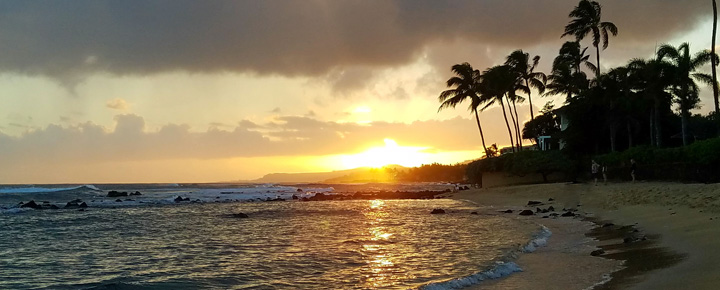This year’s summer solstice in the Northern Hemisphere arrived somewhat earlier than in over two centuries, marking the official start of astronomical summer. As the mainland United States is still contending with headline-grabbing record heat dome events, Hawaii stays milder despite the long-term impacts of weather change.
Because of this, Hawaii remains an enigmatic study in climate stability on this Ke Alanui Polohiwa a Ka̅ne (summer solstice). To the ancient Hawaiians, the solstice marked “kauwela,” and longer days with less rain and more daylight. The extended daylight was perfect for their ceremonies and activities.
Did you know? On the Big Island, the top of Hapaiali’i Heiau was a solar calendar for ancient Hawaiians. Constructed in the 1400s, it helped mark the changing seasons based on the sun’s position at the top of the heiau.
But a look into Hawaii’s unique weather dynamics depicts what’s changing. It might inspire you to join us now in the islands to escape the heat now.


Hawaii’s unique climate and diminishing trade winds.
Hawaii is renowned for its moderate climate, buffered by the Pacific Ocean and cooled by what were once persistent trade winds. However, studies indicate a gradual decline in these winds is in process, which we can empirically confirm, without doubt, over the past four decades. That change could significantly alter the islands’ natural cooling mechanism. The diminishing trade winds are reshaping Hawaii’s weather patterns, potentially leading to increased humidity, higher temperatures, and related issues.
Prior research from the University of Hawaii at Manoa has also observed a noticeable decrease in the frequency of Hawaii’s northeast trade winds over time. This is particularly concerning as it could lead to increased temperatures and humidity, negatively influencing local weather conditions and ecosystems, and impacting weather related events including fires.


The impact of climate change on Hawaii.
Global warming’s influence extends to clearly increased weather variability, including the intensity and frequency of droughts and storms. Such conditions have elevated wildfire risks, as seen in last year’s devastating Lahaina fire. While it’s difficult to pinpoint one event and directly relate it to climate change, broader trends suggest that rising temperatures and altered weather patterns play a significant role.
Hawaii visitor expectations and safety.
Visitors to Hawaii can still enjoy relatively mild weather compared to the scorching temperatures on the mainland. However, with changing conditions, it’s wise to prepare for warmer and less predictable weather than in past decades. Tourists should stay informed about Hawaii weather advisories and prioritize hydration and sun protection during their activities.
Last week’s unexpected weather event in Greece, for example, led to increased incidents, including the deaths of tourists and the disappearance of others. This highlights the risks associated with high temperatures, particularly for those engaging in outdoor activities.
Economic and Hawaii tourism impact.
Despite weather challenges in Hawaii and elsewhere, Hawaii remains a popular destination, particularly for escaping high heat events, even when the mainland is experiencing extreme weather in both summer and winter. The local economy benefits as tourists seek refuge from the heat and cold, though long-term changes may necessitate adjustments in how Hawaii markets itself, too, and manages its natural resources.
Conclusion about heat and weather in Hawaii.
As the U.S. mainland battles extreme temperatures, Hawaii offers a comparative respite, albeit one that is slowly changing. For those visiting the islands, awareness of these subtle climate shifts is key to enjoying and respecting our unique environment. Hawaii’s ongoing experience with global warming provides valuable lessons on resilience and adaptation in the face of environmental challenges.
Get Breaking Hawaii Travel News






